Monthly Recurring Revenue (MRR) is an important metric for businesses with subscription services. It shows the total money earned from subscriptions each month. For companies depending on regular subscription income, MRR is crucial because it gives an exact picture of how much money the company makes every month.
Why Track MRR
MRR is a useful metric that provides value in many different ways, for example:
-
MRR metric helps businesses predict how much money they'll make in the future, making it easier to plan for growth and manage expenses better. For app developers seeking funding or considering options to sell the company, for example, the metric is also useful, as investors and buyers often use MRR to figure out how much it is worth.
-
This metric can be used to evaluate overall customer retention rates. If MRR goes down, it might mean users are canceling subscriptions, showing that the developer needs to make its product or service better.
-
Tracking MRR helps mobile apps and other businesses find chances to grow and decide where to invest in their products or services. It also shows which subscription plans are popular and which ones need to be improved.
-
It is also crucial for apps and games with subscriptions as it reveals precisely how much money they generate regularly. This information aids the managers in making informed decisions, planning for future earnings, and finding ways to improve even further.
Read Devtodev's free ebook on monetization metrics
Ways of Calculating MRR
Calculating MRR for mobile games, especially those with in-app purchases and subscriptions, can be a bit different from traditional subscription-based businesses. Several methods exist, ranging from manual calculations to using analytics platforms:
Manual methods
-
Summing up
The most straightforward method for calculating MRR involves summing the total revenue generated from your paying subscribers for the past month without considering expenses. The formula is straightforward:
MRR = Total monthly subscription revenue
-
Involving ARPPU
If you are already aware of your monthly Average Revenue Per Paying User (ARPPU), calculating MRR becomes a simple task. Use the following formula:
MRR = Number of active subscribers * ARPPU
Make sure that all data represents the same month. ARPPU should only include revenue from recurring payments and not income from one-time fees, such as sporadic in-game purchases.
Here is a simple example:
Netflix’s standard monthly subscription costs $10.99.
In case 100,000 users subscribe then the company’s monthly revenue will equal:
100,000 x 10.99 = $1,099,000
However, it’s not that easy. Within the same month users change their price plans, upgrade or downgrade them, unsubscribe, etc. If your product has more than a couple of dozen subscribers, your best choice will be one of the analytics platforms such as Devtodev. They allow not only to calculate MRR but break it down to several components, analyze them in the same report or create an audience of, let’s say, unsubscribers, and analyze it in a different report.
Devtodev’s Map of Key Analytics Metrics in Games
How to calculate MRR using Devtodev
In Devtodev analytics platform, MRR is presented as a monthly adjusted subscription recurring gross. To calculate it, you need to:
Open Smart view -> Monetization -> Subscriptions
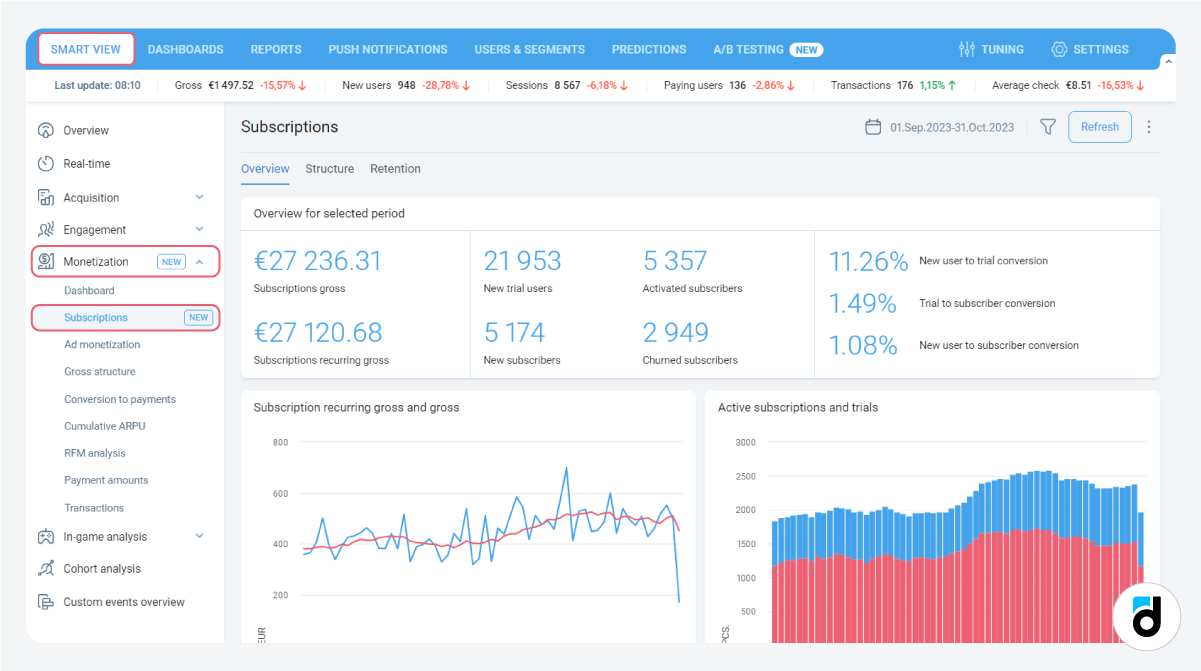
Then open the Structure tab, select Subscription recurring gross, aggregation period, period, preferred grouping type, and click Refresh:
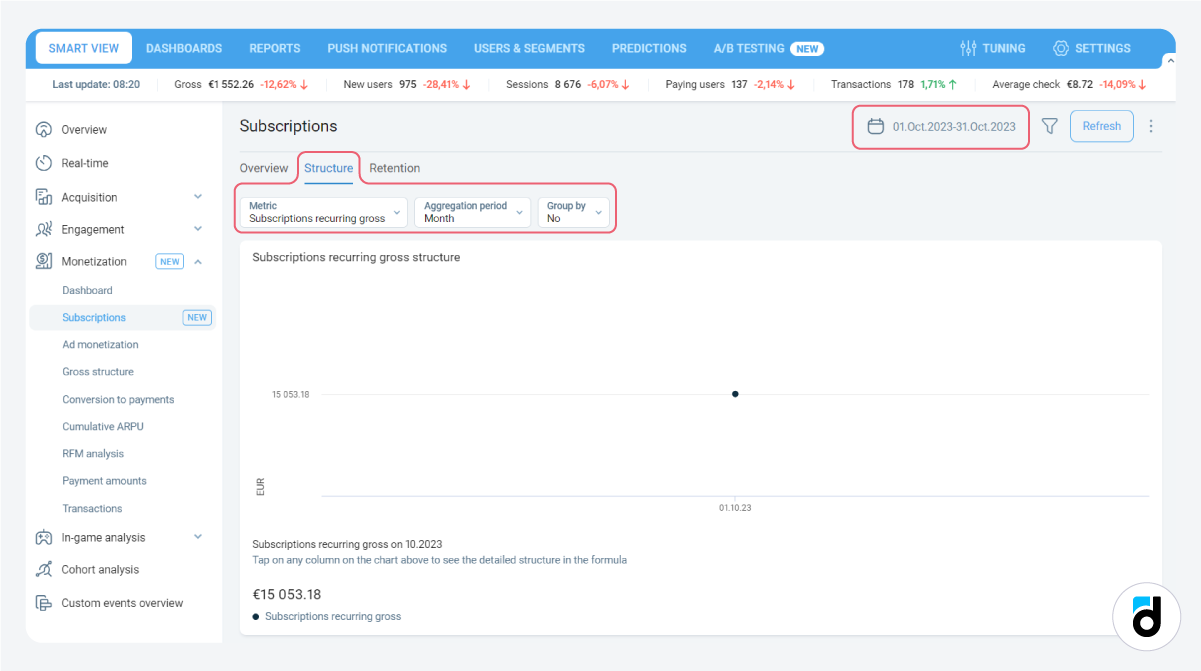
Or, if you have subscription bundles, select:
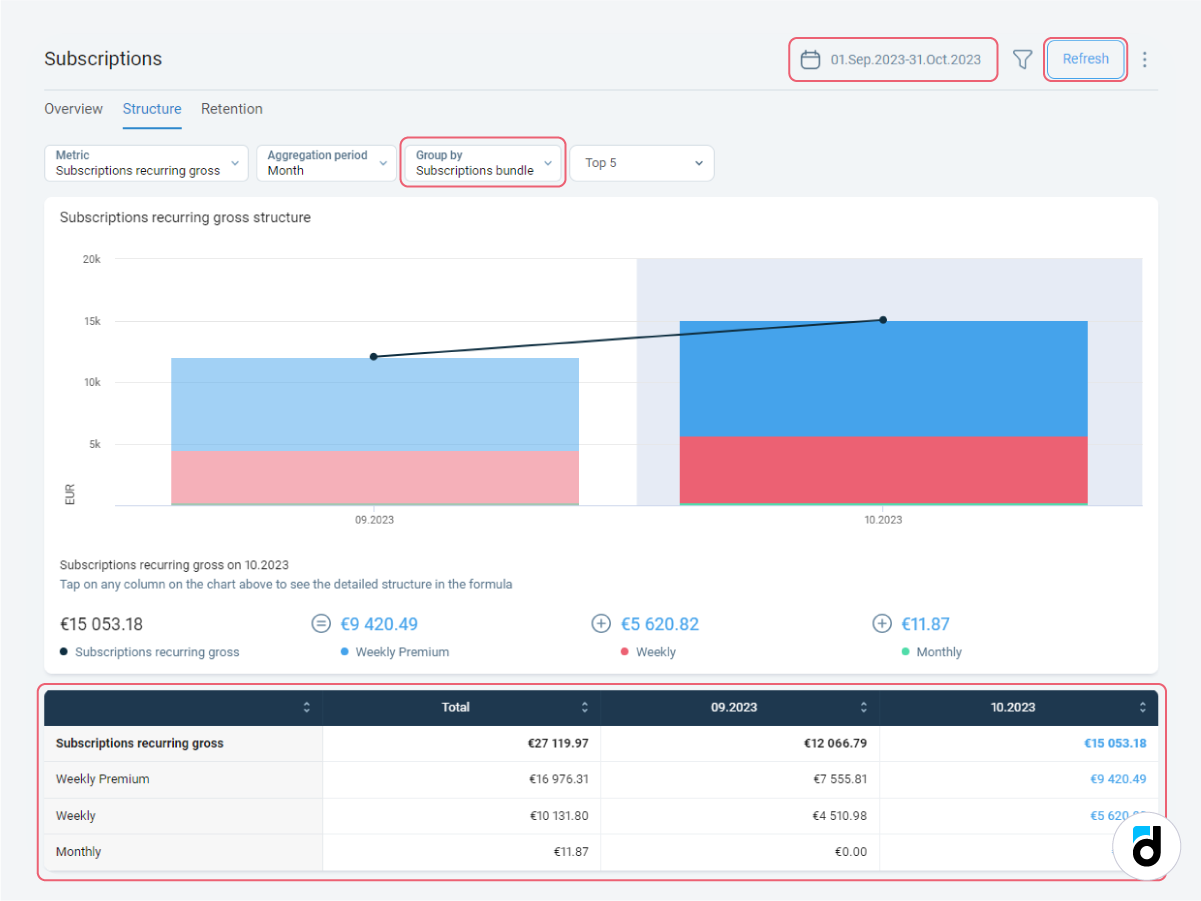
With Devtodev, you track view both subscription gross and the revenue generated by each subscription bundle (price plan) over the selected period. This allows you to compare the plans and assess their performance over time.
Also, you can analyze the components of MRR and get a broader picture of it:
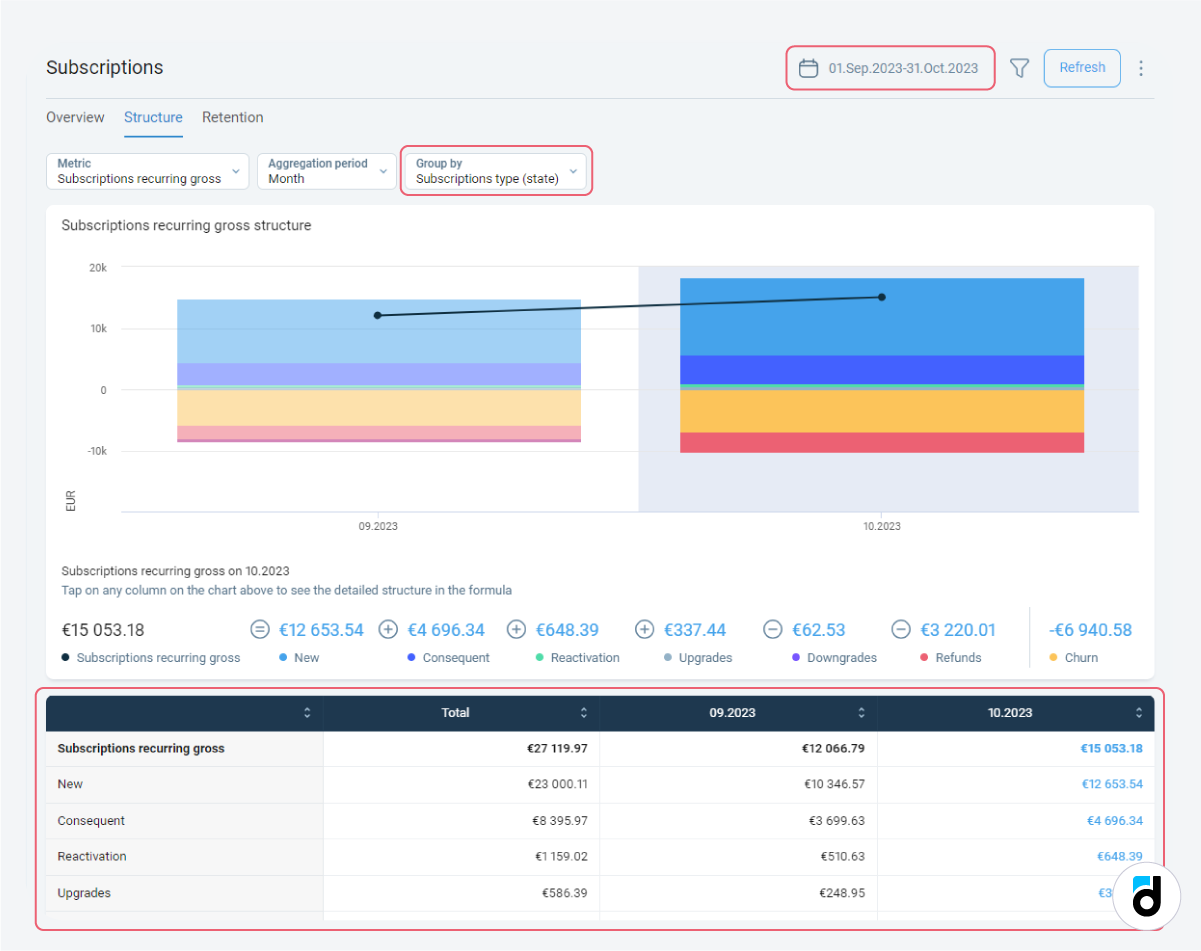
Components of MRR
Breaking down MRR into several components offers valuable insights into revenue patterns and user behavior.
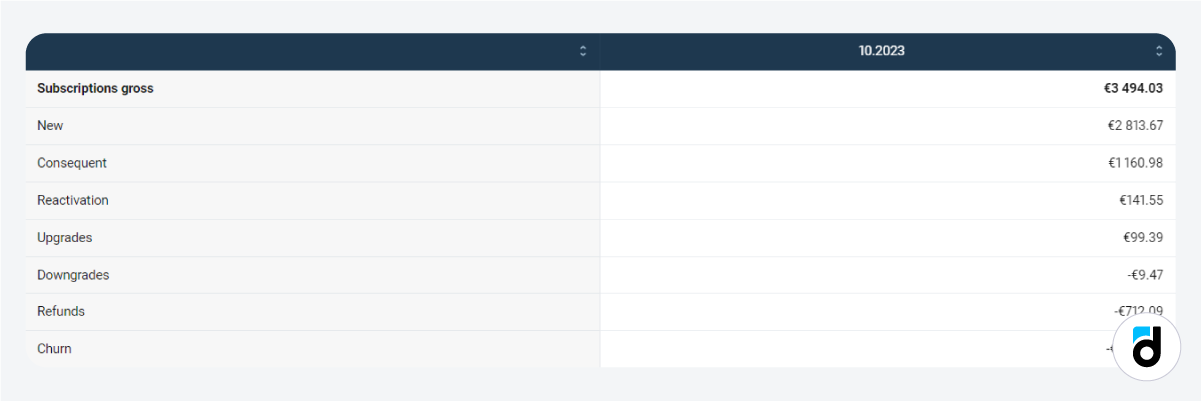
Please note that these components may be referred to by different names on other analytics platforms:
The first one is New (we can call it New MRR). This is the monthly revenue you earned from new subscribers.
Consequent is the amount of money earned from subscriptions renewed before their expiration date. It is called Retention MRR or Renewal MRR.
Reactivation in Devtodev is the amount of income from users who bought the subscription again after it once expired.
Upgrades is the amount of additional income (the difference between the more expensive new subscription and the previous one) from users who bought a more expensive subscription.
Analytics platforms often categorize reactivation and upgrades as Expansion MRR.
Downgrades is the amount of lost revenue (the difference between the cheaper new subscription and the previous one) from users who bought a cheaper subscription.
Refunds is the amount of money spent on refunds.
Churn is the income lost because users didn’t renew their subscriptions that expired during this period. It simply lets you know how much income could be earned from 100% of renewed subscriptions.
If you add up downgrades, refunds, and churn, you will get another component of MRR called Churn MRR (also known as Contraction MRR). When you calculate it as a percentage of the total MRR, you get a Net Churn MRR.
Track all the components to keep them balanced.
Read more: Game Analyst: Job, Career and How to Start
How to Improve MRR in Mobile Apps and Games
Maintaining or improving MRR is crucial for the sustained growth of your business. However, the actions you take depend on the type of app and its current way of making money. Advice for a subscription-based news app won't be the same as for a game using a mixed model.
Improving MRR in mobile apps involves a mix of strategies to engage users, offer value, and monetize effectively. All in all, the strategies for improving the metric's performance are similar to those recommended for enhancing retention rates. Here are some of them:
-
Creating a good first impression is important for your app. The more people who use it, the better chance you have of attracting paying users. So, make sure your app gives users a positive and lasting experience from the start.
-
To get more people who spend money, focus on quality users. Use ads, influencers, and app store optimization to reach the right audience. This helps turn users into paying customers, increasing your MRR.
-
Make sure your app is easy and enjoyable to use. Even if your content is great, a bad user experience can make people not renew their subscriptions. So, invest in making your app user-friendly to keep subscribers and succeed in the competitive app world.
In conclusion, understanding and improving MRR is crucial for any apps and games with a subscription monetization model. Analytics platforms such as Devtodev are valuable in this regard. Devtodev not only simplifies calculation of MRR and its components, but also allows for tracking and in-depth analysis. By regularly keeping an eye on MRR, making smart adjustments, and ensuring customer satisfaction, your app can consistently earn good money.











































































































































































































































































































































